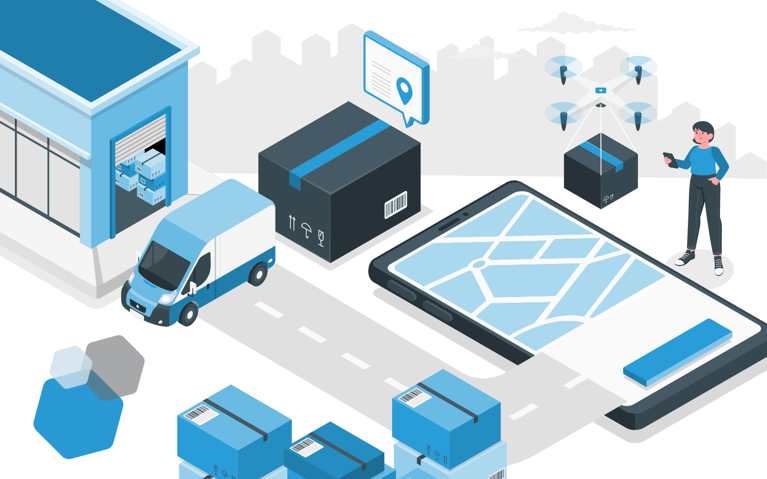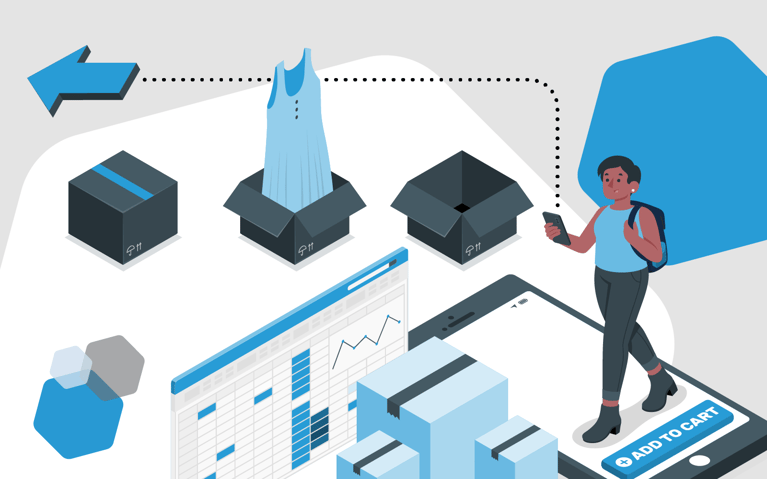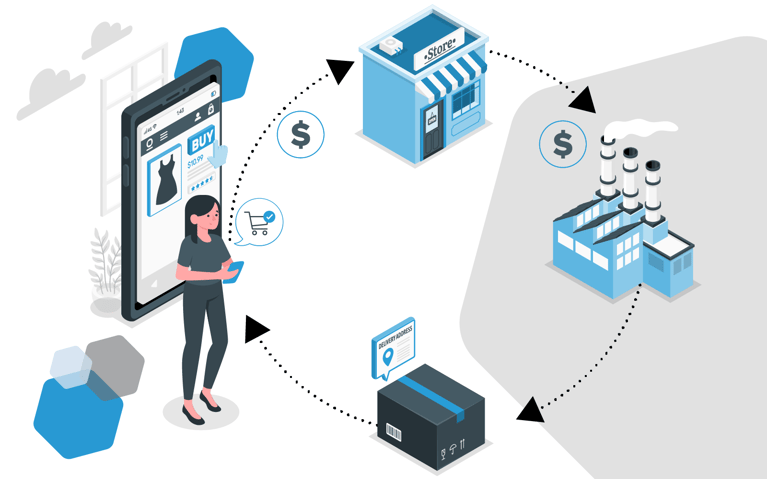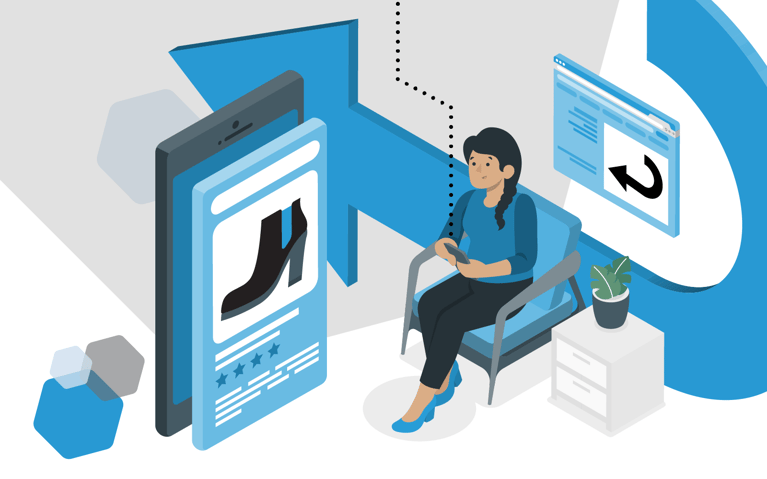As competition continues to heat up in the marketplace, ecommerce fulfillment is instrumental to the success of online sellers. From a diversified shipping strategy to strategic warehouse placements and effective returns management, each facet of the eCommerce fulfillment process plays a crucial role in driving customer satisfaction and growth.
In this blog, we’re going to cover the five key strategies that make ecommerce fulfillment achieve more for your business, from happier customers to cheaper shipping:
1. Choose the right ecommerce fulfillment model for your needs
Ecommerce fulfillment comes in all shapes and sizes, so it’s important to make sure you are using the right model for your business’s needs that stimulates growth and delivers the right brand experience:
In-house fulfillment
Self-fulfilling online orders works well for ecommerce brands that don’t yet have the order volumes to make outsourcing fulfillment cost-effective. Because you have complete control over the entire fulfillment process, it’s much easier to tailor your fulfillment processes to create a compelling post-purchase experience. However, in-house fulfillment is very difficult to scale successfully, and requires a huge financial investment that isn’t cost-effective for small brands.
Dropshipping
A dropshipping model doesn’t require an ecommerce brand to hold inventory or fulfill orders directly. Instead, online orders are forwarded to a third-party supplier who is responsible for fulfilling orders and shipping them to the end customer. Dropshipping helps online sellers to scale quickly and expand their inventory assortment, but offers lower profit margins and limited control over branding.
Third-party fulfillment
Partnering with a third-party logistics (3PL) provider sees businesses outsource their warehousing, inventory management, and order fulfillment needs to an external company that manages this on their behalf. A 3PL is an expert in supply chain logistics who can bring advanced technology and efficiency to your operation, helping to ease growing pains and manage fluctuations in order volume. While 3PLs do require ongoing costs, they free up bandwidth for brands to focus on marketing and growth.
Choosing the right fulfillment model will depend on several considerations, such as order volume, growth projections, and the branding opportunities your brand wants access to during the fulfillment process. Ultimately, the right fulfillment model should make it seamless for you to deliver memorable customer experiences at a reasonable cost.
2. Ensure seamless integrations with key business platforms
A tech-forward ecommerce operation is no longer optional for online sellers. To achieve responsive and flexible order fulfillment, order information must be communicated seamlessly between your online store and your warehouse operation. Otherwise, there’s a risk of delays or errors that result in poor customer experiences or damage to your brand’s reputation.
Integrations ensure that you can share data effectively and avoid silos between critical systems such as your WMS, ecommerce platform, EDI or returns management tool. For example, a two-way integration between your Shopify store and your WMS means that new orders are routed automatically to your warehouse, instead of waiting for the next manual upload. This saves precious hours or even days when it comes to dispatching orders, which increases customer satisfaction and prevents bottlenecks in order processing.
3. Make the right parcel carrier selection
At a time when shoppers are accustomed to online orders being delivered free and fast, your shipping strategy is key to ensuring these customer expectations are met. The shipping carriers you use to deliver ecommerce orders will dictate your brand’s ability to achieve that coveted two-day shipping window - not to mention reaching certain regions or shipping certain products.
While it can seem more straightforward to stick with one nationwide carrier for all of your deliveries, you’re choosing simplicity over cost-effectiveness. Using a single carrier makes it difficult for your business to achieve any significant cost savings based on factors such as delivery speed, geographic coverage, cost and transit time. Instead, you should consider a mix of different carriers who can align with different objectives, depending on the order that’s being shipped.
For example, leveraging regional carriers for short-haul deliveries will be significantly cheaper than using a nationwide carrier like FedEx, and usually offers better local coverage. For very large or heavy items, you may want to consider a specialist freight service designed to accommodate a higher DIM weight.
By comparing different shipping methods to find the right balance of speed and cost, ecommerce brands can make significant savings while also meeting customer expectations for timely delivery.
4. Consider a decentralized warehousing strategy
Where your ecommerce orders are fulfilled is just as important as the ‘how’. The location of your fulfillment center plays a crucial role in optimizing not only the cost of shipping, but also delivery timeframes, inventory management, and returns management.
Only using a single fulfillment center to fulfill orders can make it difficult for your brand to reach customers within a fast timeframe, especially if you need to rely on expensive, cross-country shipping methods. Trying to cater to diverse customer preferences can make it challenging to optimize inventory assortments within your warehouse, as different regions will experience different seasonal trends and demand forecasts. And if order volumes see a rapid increase during the holiday season or a big clearance sale, your fulfillment center can quickly develop bottlenecks in order processing and fulfillment that slow down delivery.
A decentralized warehousing strategy sees an ecommerce brand leverage multiple locations to store inventory and fulfill orders. This makes it possible to strategically position your warehouses closer to your target market, minimizing transit times and shipping expenses. Moreover, using more than one fulfillment center means greater operational resilience in the case of poor weather, a power outage or staff sickness that causes delays to fulfillment in one warehouse, as orders can be quickly rerouted to another center.
If you’re considering outsourcing fulfillment to a 3PL, it’s important to consider their warehouse locations and whether or not they have strategic value to your business. With 14 facilities across the U.S., Cart.com’s nationwide fulfillment network is well-placed to unlock significant cost and efficiency savings for better business growth.
5. Have a strategy to manage returns
With the focus on outbound orders, it’s easy to forget about the importance of a streamlined returns process. Returns in ecommerce are closely tied to customer satisfaction and retention, as well as operational efficiency within the warehouse. If your business doesn’t have proper procedures in place to manage return processing and handling, you’re looking at major bottlenecks in processing returned merchandise and refunds, as well as a lot of missed resale opportunities.
First, you need a streamlined front-end system for processing returns and sending approvals through to your warehouse. A return portal like Loop allows your customers to take a proactive approach to returns, minimizing friction by automatically enforcing your chosen returns policy. However, you also need efficient processes for handling returned merchandise once it arrives in the warehouse. All returned items need to be assessed quickly to determine their condition and whether they can be restocked or refurbished, so you can get items back on the shelf faster and resold.
Ecommerce fulfillment is far more than sending goods from A to B; it’s also choosing the right location for fulfillment, sharing information in real time and effectively managing customer expectations to create the best possible post-purchase experience. This requires a holistic approach that considers all aspects of your business goals and growth plan to create an ecommerce fulfillment strategy that delivers both cost savings and greater efficiency. To find out more about how to turn ecommerce fulfillment into a value-add, talk to Cart.com today.
Subscribe to our emails for the latest industry insights!
By entering your email, you agree to receive marketing emails from Cart.com






